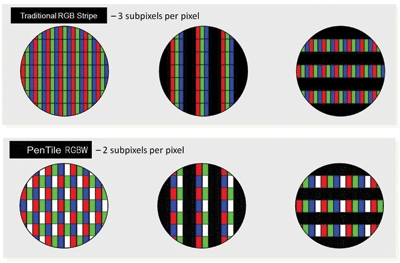Samsung has announced a new display that measures 10.1 inches and crams 2560×1600 pixels on to the screen. The display has a DPI of 300 and comes close to the DPI of the Retina display used in the iPhone 4. The new screen will be on display on May 17-19 at the SID Display Week in the LA Convention center.
The technology used on the screen is LCD and with that pixel density of 300 DPI, it allows more clarity in small text which makes reading, browsing and over tablet based activities a little better.

The LCD technology used utilizes PenTile RGBW. Rather than me trying to explain the complexities of how it works, you can check out the Pentile blog that details the technology and how it differs from other similar technologies.
Some of the highlights in the press release are detailed below:
PenTile RGBW WQXGA Technology Highlights
This 10.1-inch tablet panel is capable of 300 cd/m2 of luminance, yet uses 40 percent less power than that used by legacy RGB stripe LCDs in power-saving modes.
An outdoor brightness mode of as much as 600 cd/m2 luminance enables viewing in bright ambient lighting.
The display’s color gamut is 72 percent., allowing greater color realism than legacy RGB stripe tablet displays that have a typical color gamut of 55 percent NTSC.
PenTile technology achieves 300 dpi resolution with two-thirds the number of subpixels, maintaining the VESA/ICDM display resolution standard.
One of the key points that we read about is the power savings of using Pentile RGBW when compared to RGB stripe LCDs. The saving is a healthy 40%.
We don’t know at the moment when this technology will begin to appear in tablets, but expect that the next version of the Galaxy Tab could possibly use it. As for the iPad 3, we don’t believe Apple will use this technology and instead, will look for an alternative to match the 9.7 inch size used in the iPad as well as the IPS technology used.
One potential problem with using such a high-res screen on a tablet is the performance of the graphics. As they are now, tablets are unlikely to handle such a high resolution. However, in a year or two time, changes will also have been made to the processors and graphics chips used.





Speak Your Mind
You must be logged in to post a comment.